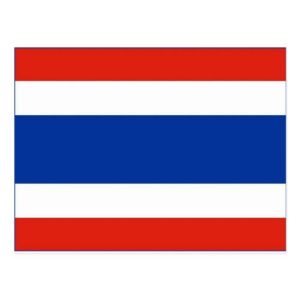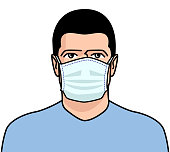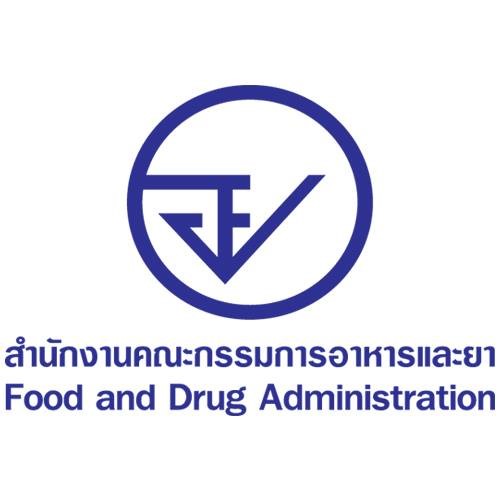
Table of Contents
Medical Device Registration in Thailand (updates and news)
Latest CSDT requirements as of Feb 2021
1 Executive summary
1.1 “overview – explanation in general for this product
have information of concentration and source of HA”
1.2 Intended use and Indication
1.3 History of marketing & marketing authorization in other countries, esp. reference countries: USA, EU, Canada, Australia and Japan, with their valid licenses, see Table next sheet
1.4 Registration status in other countries, e.g. during submission for approval, pending, rejection, etc., see Table next sheet
1.5 important safety/performance related information, see Table next sheet
2 Essential Principles of Safety and Performance of Medical Device and method used to demonstrate conformity
3 Device Description
3.1 “General description & principle
– general description & principle of product
– ingredient formulation of product – must refer to Pharmacopia and version of each ingredient
– Source of origin of HA
– packaging detail of material used of primary packaging
– photographs of product – selling packaging and outer box and quantity per unit
“
3.2 Intended use
3.3 Indications
3.4 Instructions for use
3.5 Storage condition, e.g. temperature
3.6 “Shelf life report (stability test: accelerate test & real time test)
– must follow ICH Guideline for Stability Testing of New Drug Substances and Products or ASEAN Guideline on Stability Study of Drug Product. If using other developed methods must submit method validation”
3.7 Contraindications
3.8 Warnings
3.9 Precautions
3.10 Potential adverse effects
3.11 Alternative therapy
3.12 “Materials and properties of product;
– must attach MSDS (Material Safety Data Sheet) and material specification of each ingredient
– monograph of each material
– CoA of each material
– if contain drug, e.g. lidocaine must submit Part S – Drug substance of this drug”
3.13 “Other relevant specifications of finished product
– must have specification for testing must have testing for gel property e.g. cohesivity , water uptake, elastic modulus (G’) etc”
3.14 Other descriptive information (if have)
4 Summary of design verification and validation documents
Pre-clinical Studies
(a) Biocompatibility studies of Gel and needle – follow update ISO10993 standard – if not updated version, must have gap analysis for explanation
Cytotoxicity
Sensitization
Irritation
Acute Systemic Toxicity
Subacute/subchronic Toxicity
Genotoxicity
Implantation
(b) Physical test data (full paper – objective, method, test result & summary of product)
including testing of cohesivity , water uptake, elastic modulus (G’) etc.
“(c) BioSafety information of HA:
1. Indicate material that from source of animal, human, bacteria or genetic engineering
2. Detail of source of origin
3. Detail of sample collection, manufacturing process, how to storage, testing and arrangement of this cell/material
4. process validation results, to prove that manufacturing process can minimize biological safety risk, esp. virus and transmitted microorganism
5. Information of traceability from origin until finished product”
Clinical evidence
Clinical evaluation report, including CV of evaluator
Sterilization validation
Bioburden test
Pyrogen test
Sterilant residue test
Packaging validation test
Sterility assurance level attained
5 Device labeling
Package Label – package sold to consumers must in Thai language, except no. (1) to (7) can be in English:
(1) Name of product
(2) Active ingredient & concentration
(3) Quantity per package
“(4) – Name & address of Importer
– Name of physical manufacturer, with City and Country”
(5) Month Year of manufacture (year 4 digits)
(6) Month Year of expiration (year 4 digits)
(7) Batch or Lot no.
(8) License number
(9) Storage condition
(10) Indication for use & instruction for use – can put in package insert
(11) Warnings, Precaution, Contraindication – can put in package insert
(12) Wording “Please read package insert before use” or symbol
(13) Wording “Sterile & method” or symbol
(14) Wording “Be careful, fragile” or symbol
(15) Wording “Temperature range of storage” or symbol
(16) Wording “Avoid sunlight” or symbol
(17) Wording “Don’t use if package is damaged” in “red font” or symbol
(18) Wording “Single use” in “red font” or symbol
Package insert (Instruction for Use), in Thai language
(1) Name of product
(2) Active ingredient & concentration
(3) Quantity per package
“(4) – Name & address of Importer
– Name of physical manufacturer, with City and Country”
(5) License number
(6) Storage condition
(7) Indication for use & instruction for use – can put in package insert
(8) Warnings, Precaution, Contraindication – can put in package insert
(9) Wording “Sterile & method”
(10) Wording “Be careful, fragile”
(11) Wording “Temperature range of storage”
(12) Wording “Avoid sunlight”
(13) Wording “Don’t use if package is damaged”
(14) Wording “Single use”
(15) Wording “Hyaluronic acid is used for skin correction and used only by healthcare professional or dentist”
(16) Revision date of the IFU
Package artwork of all levels
6 Risk analysis Summary & result of risk analysis, complied to ISO 14971 Application of risk management to Medical Device
7 “Manufacturer information:
– Manufacturing site name & address
– Manufacturing process flow-chart and explanation each step, including equipment for manufacturing & control, environment or manufacturing condition
– Quality system management; SOPs to ensure good manufacturing practice, for manufacturing, packaging, labeling, storage “
8 Destruction information after use
9 Certificate of free sale – legalized through Thai Embassy
10 GMP/ISO Certification of the physical manufacturing site. If using copy, must certified true copy directly by notary public, not company person to certify copy and notary public just certify that person, then legalized at Thai Embassy
11 Declaration of Conformity – template as required by Thai FDA, will draft for the manufacturer to issue
12 Letter of Authorization – template as required by Thai FDA, will draft for the manufacturer to issue
Anticipated changes in regulation for medical device registration in Thailand (Dated 9 Dec 2020)
Please note on the possible changes below:
- Classification changes from General, Notification and Licensed to 1 listing 2&3 Notified and 4 Licensed
- Some previously licensed medical device like Condoms, gloves and contact lenses might be re-classified as Notified class
- The previous requirements for General Medical Device (Free Sale Cert and ISO 13485) would follow to the new requirements of CSDT (similar to CE technical file) with the exception of class 1 listing medical device
- Products with existing approvals would get a much fast track renewal process compared with new product registration after the implementation of the new regulation.
- Grouping of product would be similar to Singapore’s system
Bottom line is it is better to start the registration process now before the regulation for medical device registration in Thailand changes in the near future (in year 2021)!
Retention of ASEAN CSDT (Dated 9th Nov 2020)

There is notification from FDA requiring the Manufacturer (and/ or their importer) to keep technical documentation at their facility that may be subjected to inspection about request from Thai FDA. This new requirement would be implemented on 13 June 2021 for Class 1-3 medical devices in Classes 1, 2 and 3, and would only be implemented on 11 September 2021 for higher risk class 4 medical devices in.
The required documentation are as follows
• Medical Device License
• Document indicating the following details:
• Generic name and tradename of the medical device
• GMDN Code
• Name and address of the manufacturer
• Name and address of the importer/distributor
• Executive Summary
• Device description
• Device description and features
• Intended Use
• Indications
• Instructions for Use
• Storage
• Shelf life (if applicable)
• Contradictions/warnings/precautions (if applicable)
• Adverse Effects Report (if applicable)
• Alternative therapies (if applicable)
• Details and quality of raw materials
• Product Specification
• Device label
• Package insert (if applicable)
• Batch record/Lot release
• Letter of Authorization (for authorized representative)
• Quality System Certificate (if applicable)
• Destruction and elimination method
• Medical Device Defects or Adverse Effects Report (if applicable)
• Further documents as required
In addition, documents are further required for class 4 medical device;
• Essential Principles of Safety and Performance of Medical Device and Method Used to Demonstrate Conformity
• Summary of Design Verification and Validation Documents
• Risk Analysis
• Manufacturer Information
The required documents are based on the ASEAN CSDT format.
Registration of mask during Covid 19 Pandemic (Dated 9th Nov 2020)

The Thai FDA has special rule for registration surgical mask during this Covid 19 pandemic.
Certificate of Free Sales that issued by manufacturer does not need to be notarized or legalized.
The product must complied to Surgical Mask standards (choose 1)
1. Thai industrial standard TIS no. 2424-2562 or newer version
2. ASTM F2100 – 11
3. EN 14683 : 2014
4. YY 0469 – 2011
5. YY/T 0969 – 2013
If any other standards are chosen, it must discuss with with the Thai FDA for their acceptance
Medical Device Registration in Thailand (Requirements)
Click here to visit authority website.
Contact us here to find out more information in Medical Device Registration in Thailand
For general device, requirements as follow:
1) Certificate of Free Sales – legalized at Thai Embassy
2) ISO13485 of the physical plant – certified true copy by notary public and legalized by Thai Embassy.
3) Product label & IFU
4) Product brochure
For higher risk device, technical documentations are needed.
For software with AI or product that needs to be classify by the authority, the following are required:
1. Product name/ Model:
2. Product Description & Mechanism of Action
2.1. Product description
2.2. Principle of operation/mechanism
2.3. Component materials
2.4. Product specification
2.5. Catalogue, photo or drawing to understand the product
3. Intended Use
4. Indications
5. Instruction for use or User manual
6. Published Clinical evidence to support safety and efficacy of the product
7. Label and package insert (IFU)
8. Registration status or approval with evidence from other countries
Frequently Asked Questions for Medical Device Registration in Thailand
Can the license be transfer from one license holder (LH) to another?
No
During the transition (re-register under new LH), can principal export products to Thailand?
Can principal sell the products from current local distributor’s warehouse to hospital?
The products imported by current distributor (LH) can still be sold to the hospital until depletion.
Can principal re-register a product under a new license holder?
Yes, as there can be more than one LH for one product.
Who will be the importer, only LH can act as importer? Is it acceptable that LH authorize another importer or distributor to do importation?
Importer must be LH. The invoice must be address to LH. But the invoice can also state “Sold to: distributor” and “Ship to: LH”, in this case Distributor can directly make payment to principal and use LH license for clearing customs.
There would be importation expenses, e.g. duty, VAT and customs fee that will be under the name of LH. So, this expense must be paid by distributor/ or principal and LH can issue the invoice for these expense during accounting.



